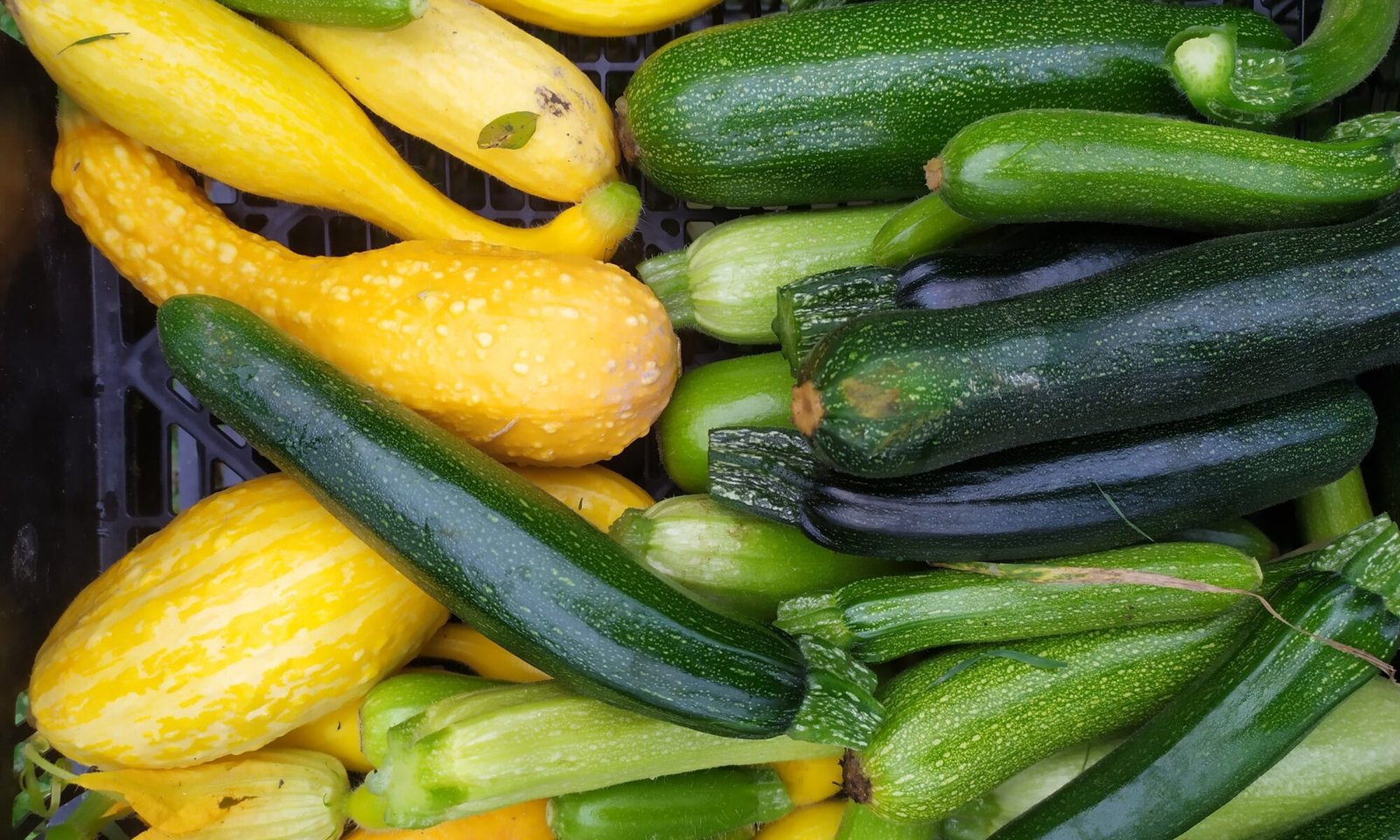Courgette (zucchini) is incredibly rewarding to grow and can be delicious when lacto-fermented. Use medium-sized fruits and remove the developing seed cavity in the middle, otherwise, the fermentation can become mushy. Lacto-fermented squash is best consumed within a few months and generally doesn’t keep as well as sauerkraut or kimchi made from cabbage. I prefer the Zuboda variety as the skin stays tender, but most varieties will work.

Zucchini with herbs
10kg medium sized courgettes
500g onion – sliced
c. 100g garlic – whole cloves
1 tbsp black peppar corns
1,5 – 2% salt (I use iodine free)
Herbs: My favourite is sweet mace but wild tarragon, tarragon, parsley, lovage, or thyme work well too, either individually or in combination. Finely chop the herbs.
Here’s how to make it:
Remove the soft parts of the zucchini*, grate the outer parts, or use the whole fruit if they are small. Layer the zucchini with onions, garlic, herbs, and black pepper. Sprinkle salt on each layer to distribute it evenly in the container. Press or lightly pound the mixture to start releasing the liquid. Ensure that the container is at least 3/4 full. Place a weight on top – using a couple of plates works well. The liquid should cover the plates. If it doesn’t, add a 2% salt solution. Put on the lid and let it sit at room temperature for 3-5 days, then move it to the refrigerator or a cool cellar (with a temperature below 15 degrees Celsius). It is best consumed within three months.
*You can dry the soft center in slices and enjoy them as chips or grind them into flour, which can be added to baking or kimchi mixture, for example.


Squash kimchi
Day 1:
10 kg medium sized summer squash (you can also mix in some slightly oversized cucumbers, peeled and deseeded). Cut into large pieces (1x2cm) and layer with salt, approximately 5% of the weight. Let it sit overnight with a weight on top (a bowl with water works well).
Day 2:
Rinse the zucchini two to three times and drain through a colander. If it still tastes slightly unsalted, add a little extra salt to the spice mixture.
1 daikon (can be replaced with kohlrabi, radishes, white cabbage, pointed cabbage, napa cabbage, or turnips). Cut into fine sticks or slices.
A large bunch of chives (can be replaced with scallions, Chinese chives, or leeks). Chop.
For the spice mixture:
500g ginger
1kg onion
400g garlic
100g dried chili – ground
70g paprika ground
1 daikon (can be replaced with kohlrabi, radishes, or turnips)
2 tbsp salt
Blend everything into a paste using a food processor or a large mortar, adding a little water if it feels dry.
Mix all the ingredients together and pack them tightly into a container. Leave it at room temperature for 2-4 days (if fermenting directly in a jar, release the pressure occasionally during the first few days), then move it to a cool place in the refrigerator or cellar. It will be ready to be jarred after two weeks when the carbonation has decreased. Ideally, it should be consumed within four months, as it may become soft after that. However, it can be enjoyed throughout the fermentation process.

